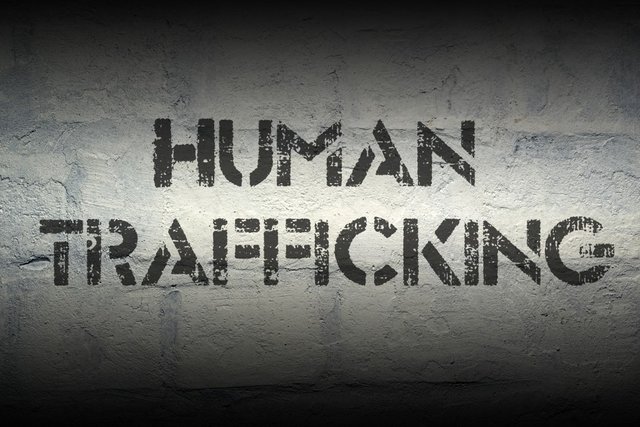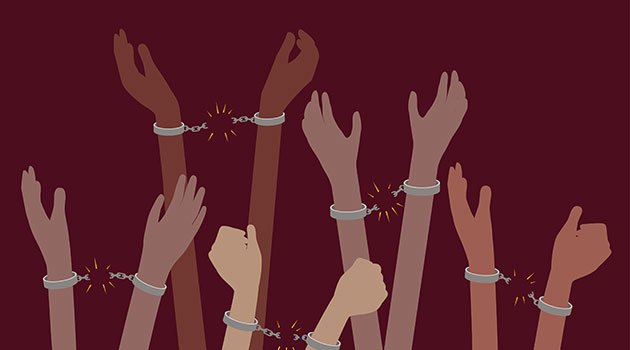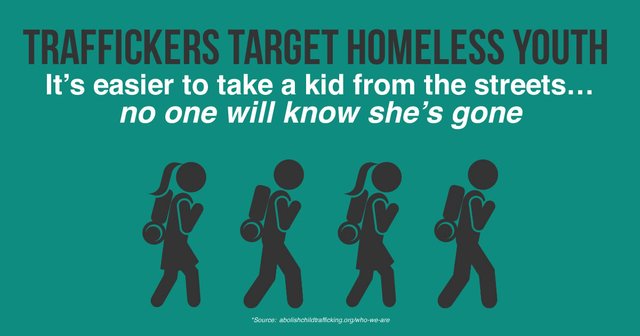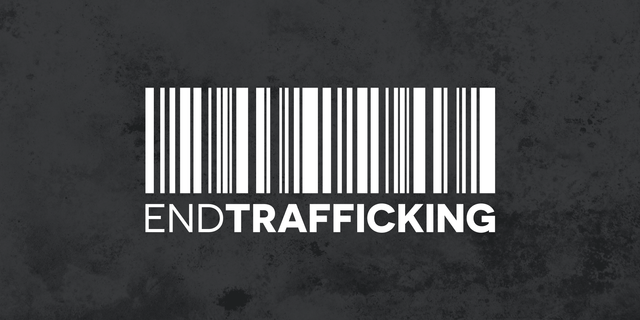The Concept of Human Trafficking

Human trafficking is a social phenomenon that has an impact on almost the entire planet. It affects millions of children, women and men and on the other hand it brings profits that counts in billions of dollars to criminals all over the world. According to (Osimen and Pedro, 2014) ‘Trafficking in human beings is modern-day slavery and has become a widespread phenomenon mostly in Africa. Two hundred years after the abolition of the trans-Atlantic slave trade, the trafficking of African children continues unabated. Human trafficking has become a heinous transnational crime undertaken by highly organized syndicates. The syndicates employ deceit, coercion and prey on vulnerable girls whom they traffic overseas for domestic servitude and sexual exploitation. Human trafficking is inherently demeaning, harmful and violates fundamental human rights to life, liberty, dignity and freedom from discrimination.’ This alludes to the evil and wickedness of human trafficking.

The first internationally agreed upon definition of trafficking is embodied in the UN Protocol to Prevent, Suppress, and Punish Trafficking in Persons, Especially Women and Children, Supplementing the UN Convention against Transnational Organized Crime (2000), as follows:
The recruitment, transportation, transfer, harbouring or receipt of persons, by means of the threat or use of force or other forms of coercion, of abduction, of fraud, of deception, of the abuse of power or of a position of vulnerability or of the giving or receiving of payments or benefits to achieve the consent of a person having control over another person, for the purpose of exploitation. Exploitation shall include, at a minimum, the exploitation of the prostitution of others or other forms of sexual exploitation, forced labour or services, slavery or practices similar to slavery, servitude or the removal of organs.( UNESCO, 2006). Going by this definition, (Aronowitz, 2009:1-2) points out that trafficking must comprise:
- An action (recruitment, transportation, transfer, harboring, or reception of persons)
- Through means of (threat or use of force, coercion, abduction, fraud, deception, abuse of power or vulnerability, or giving payments or benefits to a person in control of the victim)
- goals (for exploitation or the purpose of exploitation, which includes exploiting the prostitution of others, other forms of sexual exploitation, forced labor or services, slavery or similar practices, and the removal of organs).
One element from each of the above must be present for trafficking to occur.
However, the UN convention for the prevention of transnational organized crimes further stated that ‘The consent of a victim of trafficking in persons to the intended exploitation…shall be irrelevant where any of the…[fore-mentioned] means…have been used. The recruitment, transfer, harbouring or receipt of a child for the purpose of exploitation shall be considered’ trafficking in persons,’ even if it does not involve …[any of the above listed means]. “Child” shall mean any person under eighteen years of age’ (UNESCO, 2006)
Historically, human trafficking is not a new phenomenon to mankind; it is as old as human existence and civilisation. It dates back to the time of old empires and kingdoms when captivities of conquered empires were taking from their place of origin into slavery and made them to serve kings and queens of other lands. The practice later changed to the sales of the excess captives to other equally powerful kings that needed the services of slaves either as palace wards or status symbol and appearance of dignity, power and affluences or in some cases as objects of sacrifice to appease ancestral spirits. When, the continent of Africa was discovered by the early Portuguese explorer, the practice was exploited by the Portuguese sailor who saw the ready market for the African slaves in tea and sugar plantations in Europe and America respectively. Hence the beginning of the Trans-Atlantic and Trans-Sahara slave trades that saw millions of blacks’ able-bodied men as commodity of trade to be ferried across the sea and Sahara into slavery. However, by the 18th century when the Europeans economic interest shifted slowly from agriculture to industry coupled with the humanitarian sentiment and movement that swept across Western Europe and American. By the last decade of the past century, global consensus has been developed that human trafficking and slavery are two brothers of the same parent, because they both represent similar purpose if not the same. The Geneva Convention on the Abolition of Slavery, adopted by the League of Nations in 1926 and joined by a Supplementary Convention in 1956, provides a precise definition of slavery and trafficking. The Convention described Slavery as the possession of a person and exercise over the same of any or all the powers attributing to the right of ownership. The Geneva Convention described trafficking as a practice which includes the act of capturing, acquisition or conferment of a person to reduce the same to slavery, as well as every act of acquisition or conferment by sale or exchange, and, in general, every act of trading or transport of slaves. This menace, represent one of the dehumanising form of human right abuse and child labour which nations have been encourage to develop mechanisms and immediate measures to control (Osimen and Pedro, 2014). This historical allusion shows that human trafficking is indeed a modern way of slavery and for third world countries represents neo colonialism. This UNESCO noted that human trafficking “ in the context of globalization, has acquired shocking new dimensions. It is a complex, multi-faceted phenomenon involving multiple stakeholders at the institutional and commercial level. it is a demand-driven global business with a huge market for cheap labour”. Olajide Toriola, in an article on western post called it “an old wine in a new wine bottle, the transplant of slavery, colonialism and neo colonialism”
Human trafficking and the brain drain phenomenon:
Human trafficking has fuelled the brain drain of African think tank resources and is a carpeted reason for the continued trend of underdevelopment widespread in the continent. (Capuano and Marfouk 2013) noted that: According to the latest figures, a high percentage of highly educated African migrate oversees. For example, between 1990 and 2000, the stock of high-skilled immigrants from African countries residing in the OECD(organisation for economic co-operation and development ) countries increased by 90% . As a consequence, a number of African countries ''lost'' a significant proportion of their highly educated labor force.
Dr Donald chimanikie, at the African Association For Public Administration And Management (AAPAM) 2005 defined brain drain as the migration of professional people(as scientists, professors, or physicians) from one country to another, usually for higher salaries or better living conditions. Interestingly, he pointed out among other things that SAPs (Structural Adjustment Policy)designed to combat Africa’s economic problems have created, at least in the short run, conditions that actually increase the pressure on the educated and skilled to emigrate. By forcing governments to lay off public sector workers, open their economies to foreign competition, and lower wages, SAPs have compounded the plight of Africa’s middle classes, whose living standards have declined drastically. This has encouraged brain drain from developing to developed OECD countries and has become an issue of major international concern.
What this shows is that, policies and programs imposed on African countries by the developed countries has further pushed her into perpetual servitude and neo colonial slave important only for their developmental benefits. Former US president, Barak Obama at a lecture at Johannesburg on the 18th of july 2018 urged young Africans to stay at home and strive for development while calling brain drain “a real issue” and calling on African governments to do more in curbing it, he said that “more and more not only are we seeing concentrations of talent in various global centres, whether it is shanghai or Dubia”.
Human trafficking in Nigeria:
Human trafficking remains a topic of concern in Nigeria, it has been described as a source, destination and transit country. Trafficking mainly young women and girls to Europe and other destinations, and there is growing evidence for the involvement of Nigerian criminal networks. (Osimen and Pedro 2014). Trafficked Nigerian women and children are recruited from rural areas within the country’s borders − women and girls for involuntary domestic servitude and forced commercial sexual exploitation, and boys for forced labour in street vending, domestic servitude, mining, and begging.
Internationally trafficked Nigerians come from all parts of Nigeria but some States tend to provide more trafficked persons than others. These States include akwa ibom, cross river, Rivers,Delta, edo, imo, ebonyi, Kano, Delta, ogun, oyo and lagos.
UNESCO in discussing the cross-border trafficking that goes on in Nigeria, described it as such: “West African destination countries for Nigerian trafficked women and children are republic of Benin, Togo, Côte d’ivoire, equatorial Guinea, Cameroon, Gabon and Guinea where trafficked persons are destined to work mostly as domestic servants and on farm plantations. More specifically, women and children recruited from Shaki in oyo State are mainly trafficked to Guinea, Mali and Côte d’ivoire to work as hawkers and domestic servants. Recently, Nigerian women and young girls were also trafficked to Benin for prostitution. Most of these trafficked persons find themselves deceived into believing that their destination would be Europe. Common European destinations for trafficked women and children from Nigeria are Italy, Belgium, Spain, the Netherlands, Germany and the United Kingdom. There is a noticeable and growing trend in the trafficking of Nigerian women and young girls to the United Kingdom to work as domestic servants”.
It is important to note that most of the plantation destination for trafficked persons around the African region are owned by European capitalist or local neo colonialist as agents for their European partners. Such is the story of the “chagala” slave market in egypt as reported by Wale Ajetunmobi.
Causes of trafficking: In Nigeria, according to NAPTIP and UNESCO, the major causes for people’s reception of the deception of traffickers include:
*unequal access to education
*lack of legitimate and fulfilling employment opportunities
*disruption of support systems(death and demise of parent or guardian)
*increasing demand for foreign workers
*wide spread poverty
*domestic and institutional violence
*growth of the billion-dollar sex and entertainment industry
*Harmful Cultural and Social Realities
According to (Osimen and Pedro 2014) Africa has the highest rate of child labour in the world: 41% of five to fourteen year olds. About 8 million Nigerian children are engaged in exploitative child labour, putting them at great risk of human trafficking, as 43% of them are based in the southern border towns of Calabar, Port Harcourt and Owerri. Approximately 19% of school children in Nigeria work after school in exploitative and dangerous environments. It is estimated that 80% of children trafficked to Italy are from Africa and 60% of these are Nigerians. Boys are mostly trafficked from the south eastern part, Imo, Abia and Akwa-Ibom into Gabon, Equatorial Guinea and Congo, while those from Kwara move to Togo as far as Mali to work on the plantations, Slavery International, 2003, (UNICEF, 2003).
Governmental responses to trafficking in Nigeria: In its bid to counteract the prevalence of trafficking activities, the Nigerian government came up with many programs and laws which include:
LAWS:
Nigeria is one of the few countries in Africa to have passed a national law against trafficking, the “trafficking in Persons (Prohibition) law enforcement and administration act 2003” enacted by the national assembly. This law addresses the issue of human trafficking in Nigeria in a comprehensive manner. This law was instrumental in the creation of the National Agency for the Prohibition of Trafficking in Persons (NAPTIP). Section 4 of the Nigerian trafficking law empowers the NAPTIP to coordinate all the laws on trafficking in persons in the country.
Furthermore, Nigeria became a signatory to the transnational organized crime convention and its trafficking in persons protocol on 13th December 2000. Article 5 of this protocol enjoins state parties to criminalize practices and conducts that subjects human beings to all forms of exploitation which includes in the minimum sexual and labour exploitation. (NAPTIP: 2017)
The Nigerian government also recently started working with destination countries such as Italy and Great Britain in its bid to protect trafficked persons and punish traffickers. a Memorandum of Understanding was signed in November 2004 between Nigeria and Great Britain, allowing for the extradition of offenders to their home countries to face appropriate charges and punishment. Nigeria also signed a Memorandum of agreement with Italy in September 2000. This agreement established a comprehensive legal framework for the repatriation of illegal Nigerian immigrants, and especially women, from Italy to Nigeria. (UNESCO: 2006)
NAPTIP also collaborates with the Nigerian immigration office, the police and NGOs and has established offices across the country. Equally both the police and immigration service have established anti-trafficking Units located at exit and entry points.
Programmes:
 The Nigerian government, identifying poverty as a major cause of human trafficking, has in its efforts come up with programmes such as (NEEDS) National Economic Empowerment Development Strategy at the federal level and (SEEDS) State Economic Empowerment Development Strategy at the state level.
The Nigerian government, identifying poverty as a major cause of human trafficking, has in its efforts come up with programmes such as (NEEDS) National Economic Empowerment Development Strategy at the federal level and (SEEDS) State Economic Empowerment Development Strategy at the state level.
Furthermore the federal government adopted the Universal Basic education (UBE) policy. the UBE policy made it free and compulsory for every child to attend school up to the junior secondary level. it also punishes the parents or guardians of children who are found on the streets and not attending school during school hours with imprisonment. (UNESCO: 2006) However, the implementation of this programmes as with almost every other programme in the country is usually weak.
The National Agency for the Prohibition of Trafficking in Persons (NAPTIP), among other things, is a body charged with the responsibility of carrying out extensive research and massive awareness programmes on human trafficking and related matters. Recently NAPTIP has also become increasingly active in carrying out reintegration programmes for trafficked persons through mediums such as, skill acquisitions, grants empowerment, free education and counselling for psychological needs.
From the review of literatures and documented works on human trafficking and neo colonialism, it is observed that although extensive research and intensive coverage of the problems, causes and implication of the phenomenon has been attempted, the fundamental issue of human trafficking as an outcome of neo colonial practices is still on the rise and research linking this cause and effect minimal. Therefore this research seeks to investigate the effects of certain practices observed to be neo colonialism on the issue of human trafficking and recommend ways by which it can be arrested and or greatly reduced.
